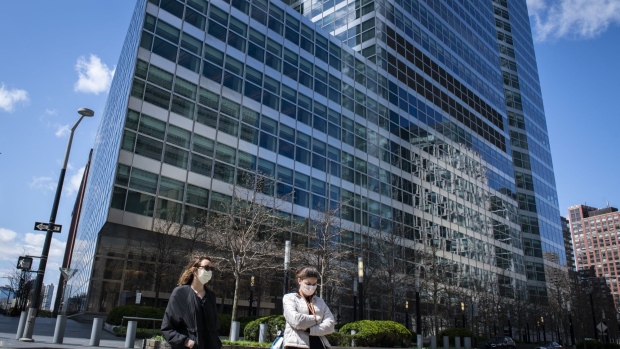May 17, 2021
U.S. Banks Could Shed 200,000 Jobs in Decade in Efficiency Drive
, Bloomberg News

(Bloomberg) -- U.S. banks could cut as many as 200,000 jobs in the next decade as they try to boost efficiency to compete with fintech and other upstarts encroaching on their territory, according to Wells Fargo & Co.
The eliminations are likely to accelerate as the economy reopens following the Covid-19 pandemic and conditions normalize, Wells Fargo analysts led by Mike Mayo said in a note, adding that “this will be the biggest reduction in U.S. bank headcount in history.” Banks have little choice but to improve productivity in the face of stiffening competition from fintech, technology and retail firms, he said.
Non-banks offering lower-cost products online have steadily chipped away at the businesses of traditional lenders, with efforts intensifying over the past year as the pandemic pushed consumers to digital options. Earlier this year, Walmart Inc. lured a pair of senior Goldman Sachs Group Inc. bankers to run its fledgling fintech startup -- a move that struck fear on Wall Street. Mainstream lenders have pleaded with regulators to halt efforts by retailers and startups to offer core banking products.
“Technology is impacting banking more than even before,” Mayo said in an interview. “For banks, technology is both friend and foe.”
Goliath Winning
The moves will ultimately improve productivity as banks become leaner with less layers of management, Mayo said. That’ll enable them to keep up with competitors, in a capital-for-labor swap that leads to 100,000 to 200,000 reductions over the decade.
“Goliath is winning,” Mayo said. “The largest banks have more scale to deploy greater amounts of technology to better serve customers while becoming more efficient.”
Branches will likely continue to close, with many shuttered by the pandemic unlikely to reopen. Employment per branch will also probably fall amid more self-service options, Mayo said. While the pandemic increased headcount by about 2% as banks took care of employees and pledged not to eliminate jobs, that short-term trend is likely to reverse, he said.
Mayo said that the push for greater efficiency could end up forcing a smaller share of staff to shoulder more of the workload as the distance between the lowest-level employee and top executives shrinks.
“What you’re seeing is flatter organizational structures with de-pyramiding, greater scope of responsibility and more expectations that each employee will generate either more revenues or greater efficiency,” Mayo said.
©2021 Bloomberg L.P.





